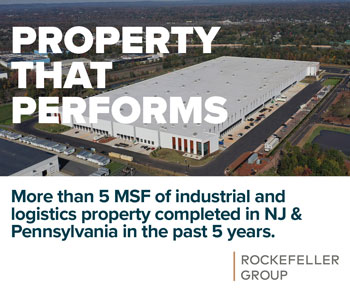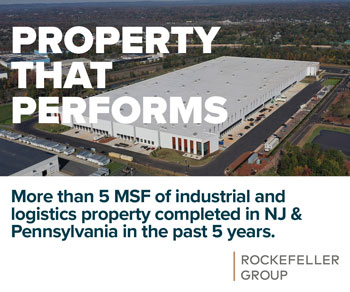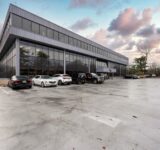By Avi D. Kelin, Esq. of Genova Burns LLC
As far back as 1957, advertisements in the nation’s leading magazines promised that, “one day, your car may speed along an electric super-highway, its speed and steering automatically controlled by electronic devices embedded in the road.” In the 64 years since then, there has been tremendous technological progress that makes this vision on the brink of becoming reality.

As far back as 2013, an auto reviewer for the New York Times reported driving “surprisingly long highway stretches without touching the accelerator, brake pedal or steering wheel.” California has seen autonomous vehicles drive 1.99 million miles during 2020, based on annual reports filed to the California Department of Motor Vehicles by licensed companies. Every automaker and many Silicon Valley companies are racing to develop this technology over the short and long terms. Automakers are on track to release increasing numbers of models with basic automated-driving functions in the next few years. We are already seeing deployment of autonomous vehicles in commercial settings including for mining equipment and other heavy equipment. Honda announced that, with advanced driving features, it expects to completely eliminate traffic fatalities involving its vehicles by 2050. 2050 is also the year by which some experts expect that the majority of vehicles on the road will drive themselves.
The law is also attempting to catch up with these advancements in technology, with more than 30 states and the District of Columbia already passing laws related to autonomous vehicles. California has issued more than 50 testing permits for autonomous vehicles with a safety driver required, plus an additional 8 permits that allow for testing without a human driver. In December 2020, the California Department of Motor Vehicles issued its first permit for the deployment of an autonomous vehicle — for public use, not just testing — with no requirement for a safety driver. Closer to home, the New Jersey Legislature in 2019 created the New Jersey Advanced Autonomous Vehicle Task Force. I was fortunate to serve on this Task Force along with both public and private members with wide-ranging expertise in such matters as insurance, public safety, energy and infrastructure. The Task Force’s report to the Governor and Legislature created a road map for the safe introduction of autonomous vehicles, considering licensing, updating of New Jersey laws, insurance and liability, infrastructure and public transport. New proposed legislation in New Jersey would implement the Task Force’s recommendations and create a licensing process under the jurisdiction of the Motor Vehicle Commission.
What does this new technology mean for the real estate world? The impact of autonomous vehicles will be felt across a wide spectrum of real estate concerns, and the savvy professionals will begin preparing now for this autonomous future.
With traffic on New Jersey roads increasing every year, our highways are becoming more jammed. The daytime population of the Shore Region this summer is expected to be 762,000 daily. Over the most recent Fourth of July weekend, 1.15 million New Jersey residents used cars in their holiday travel. The arrival of autonomous vehicles can bring relief to our state’s traffic-weary drivers. Once human drivers no longer need to operate their vehicles — once vehicles no longer have steering wheels — time that was previously “wasted” during a commute can be made productive again, as cars become mobile offices or entertainment centers. In addition, vehicles that can drive themselves can also support reduced headway between vehicles; shorter safe-following distances will allow our current roads to move more people on the same infrastructure.
As big cities attempt to recover from the flight to the suburbs during COVID, will this effort be undercut when a long commute is no longer quite as daunting as it once was? Even though hybrid-work arrangements are likely to stay, commuters may not be fazed by a long commute when their travel time can be transformed into productive work time. This may make a shift from urban to rural areas more likely.
But an even simpler and yet more profound change will be felt by parking logistics. According to one study, Americans spend an average of 17 hours per year looking for parking, at a total annual cost of $73 billion. A study of 41 major cities found that, on average, 31 percent of urban space in downtown areas is devoted to parking. This valuable land can be put to more efficient use when my vehicle is able to drop me off at a downtown workspace and then drive itself to offsite parking lots, allowing for increased and more affordable residential and commercial development.
In addition, we may be more likely to see municipalities reduce or eliminate parking minimums for new developments. Reducing these parking requirements — even far from public transportation because autonomous vehicles make ride-hailing cheaper and more convenient — will give greater flexibility to developers, will spur on development and will make development more affordable.
A change in the use and supply of usable land would have a very significant impact on the entire industry. Autonomous vehicles, with the potential to change attitudes regarding long commutes and allow for more efficient use of available land, will mean big things in real estate, in a future that is closer than it may appear.
Avi D. Kelin, Esq. is Chair of the Autonomous Vehicle Law Practice at Genova Burns LLC. He served on the New Jersey Advanced Autonomous Vehicle Task Force.
Sydney Schubert is a law clerk at Genova Burns LLC, and a student at Seton Hall University School of Law.










